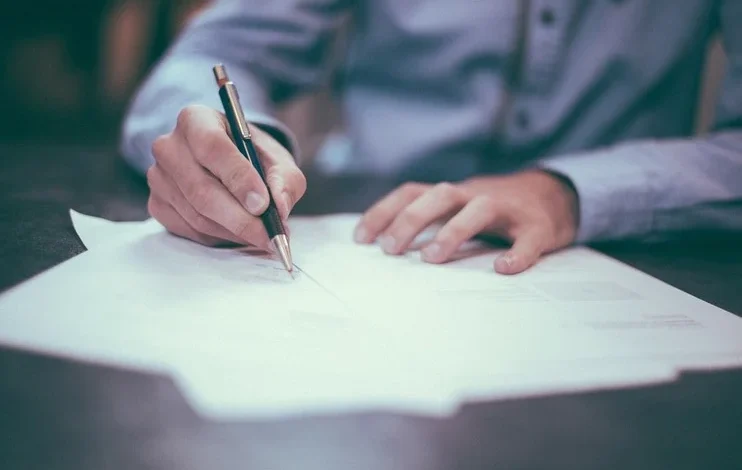The Ultimate Guide to Effective Credit Dispute Letters That Work

Understanding Credit Report Errors and Their Impact
These inaccuracies, such as incorrect account information, outdated negative items, or even accounts that don’t belong to you, can significantly lower your credit score. A lower credit score may lead to higher interest rates, difficulty securing loans, or even denial of housing and job opportunities.
Recognizing and addressing these issues is critical, and one of the most effective ways to do so is by using credit dispute letters that work. These letters are formal requests sent to credit bureaus, asking them to investigate and correct errors on your report. By properly identifying and disputing inaccuracies, you can ensure that your credit report reflects your true financial behavior.
Mistakes may arise from data entry errors, identity theft, or outdated information that should no longer be reported. Regularly reviewing your credit report is essential for catching these issues early.
Taking action not only protects your creditworthiness but also helps maintain your financial reputation. By learning how to craft and send effective dispute letters, you can take control of your credit report and work toward a healthier financial future.
Essential Components of a Successful Credit Dispute Letter
Crafting credit dispute letters that work requires including specific elements that make your request clear, professional, and actionable. The success of your letter often depends on how well it communicates the error and supports your claim.
Start with accurate personal information. Include your full name, address, and contact details to ensure the credit bureau can identify your account correctly. Clearly reference the specific item you are disputing by including the account number or any other identifying details listed on your credit report.
Explain the error concisely. Use clear language to describe why the item is incorrect, such as a payment listed as late when it wasn’t or an account that doesn’t belong to you. Avoid lengthy explanations—stick to the facts.
Attach supporting documents. Evidence like billing statements, canceled checks, or identity verification documents strengthens your case. Ensure all copies are legible and relevant to the disputed item.
End with a specific request. Politely but firmly ask the credit bureau to investigate the issue, correct the error, and update your credit report.
By including these key elements, you can ensure your dispute letter is both effective and professional, increasing the likelihood of a successful resolution.
Step-by-Step Process for Writing and Sending Dispute Letters
Crafting credit dispute letters that work involves following a structured approach to ensure clarity and effectiveness.
- Obtain Your Credit Reports
Review them thoroughly to identify errors such as incorrect accounts, payment statuses, or outdated information. - Identify the Errors
Highlight the specific inaccuracies you want to dispute. Make a note of the account numbers, dates, or any details related to the errors to reference them clearly in your letter. - Draft Your Dispute Letter
Begin your letter by including your personal information (name, address, and contact details) and specifying the credit bureau you are addressing. State the disputed item clearly, explain why it is incorrect, and provide supporting evidence. - Attach Supporting Documents
Include copies of documents such as bank statements, identity verification, or receipts to substantiate your claim. - Send Your Letter
Mail your dispute letter via certified mail with a return receipt request. This ensures you have proof of delivery and a timeline for follow-up.
By adhering to this process, you can create an effective dispute letter that increases the chances of resolving errors successfully.
Tips for Following Up and Resolving Disputes Successfully
Sending credit dispute letters that work is only the first step. Following up and ensuring a resolution requires persistence and attention to detail.
- Track Your Submission
This provides proof of delivery and a timeline for the credit bureau to respond, which is typically within 30 days. - Monitor Your Credit Report
After submitting your dispute, check your credit report regularly to see if the error has been corrected. - Respond to Bureau Requests
Credit bureaus may ask for additional information to verify your dispute. Respond promptly and provide any requested documents to avoid delays in the resolution process. - Escalate if Necessary
If the credit bureau denies your dispute without valid reasoning, you can escalate the matter by contacting the creditor directly or filing a complaint with the Consumer Financial Protection Bureau (CFPB). - Maintain Records
These records are invaluable if you need to escalate your case or take legal action.
Conclusion
In conclusion, writing effective credit dispute letters is a powerful way to correct errors on your credit report and improve your financial standing. By following the right steps, including identifying mistakes, providing supporting evidence, and maintaining a professional tone, you can ensure your dispute is taken seriously. Persistence and careful follow-up are key to resolving issues successfully. With these strategies, you can take control of your credit and work towards achieving better financial health. If you need legal counsel, be sure to contact Ware Law Firm for trusted legal assistance.





